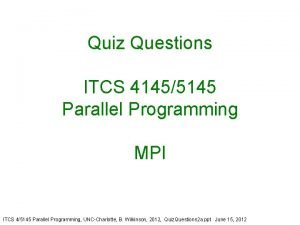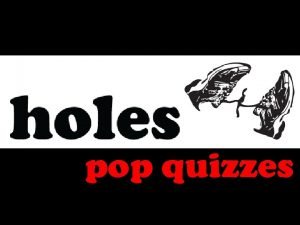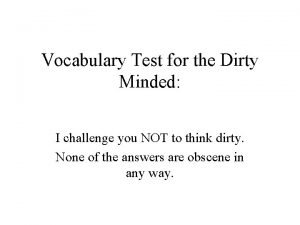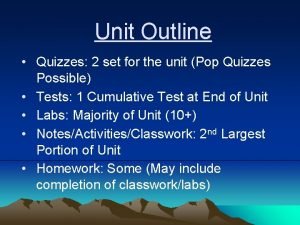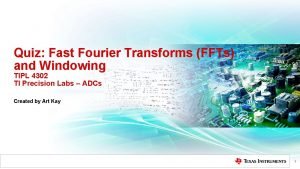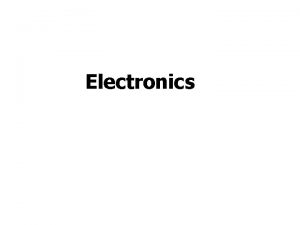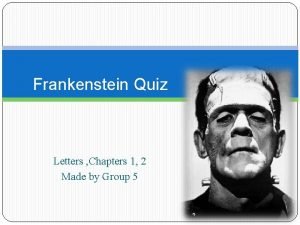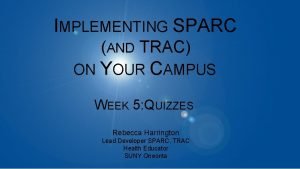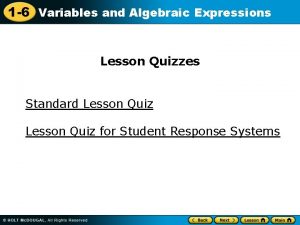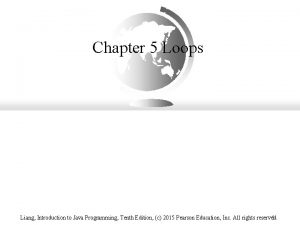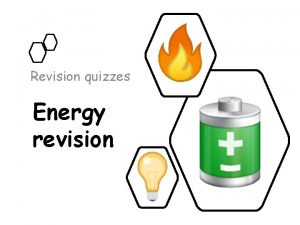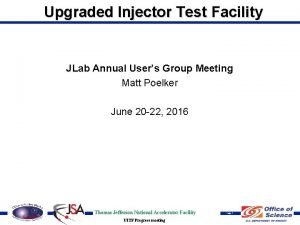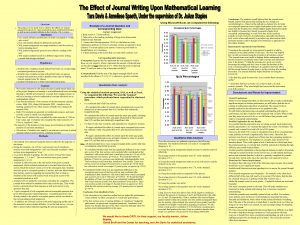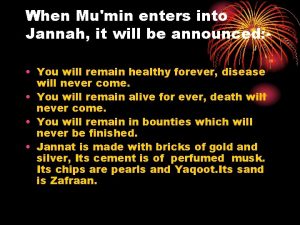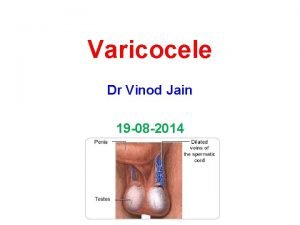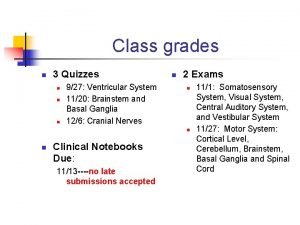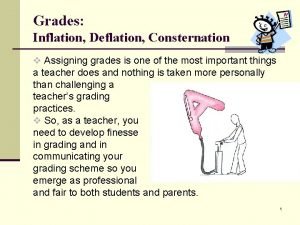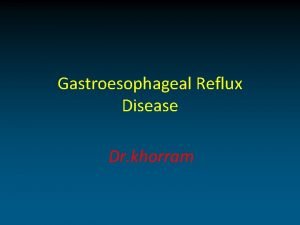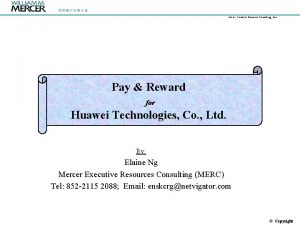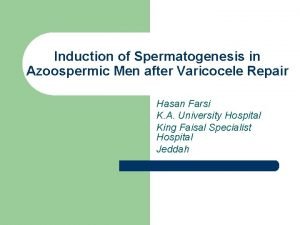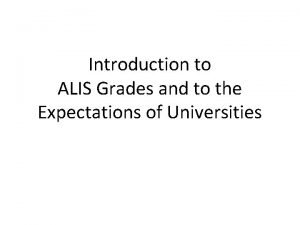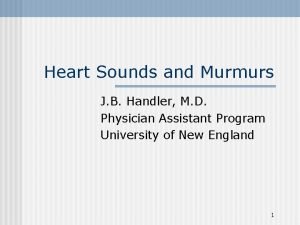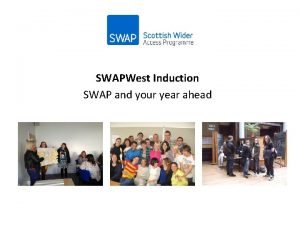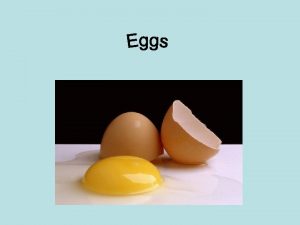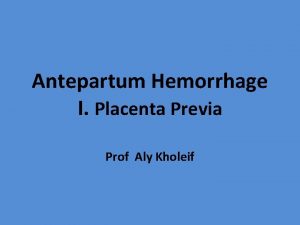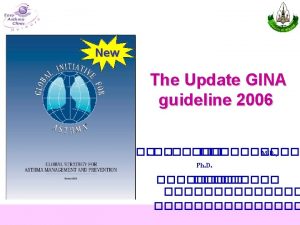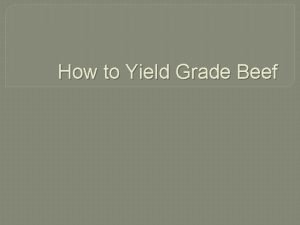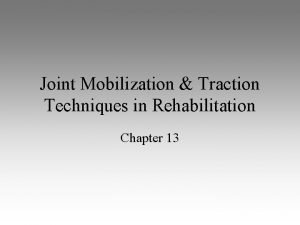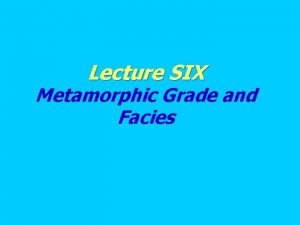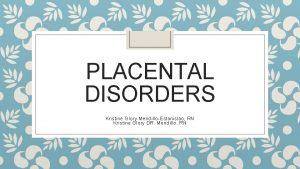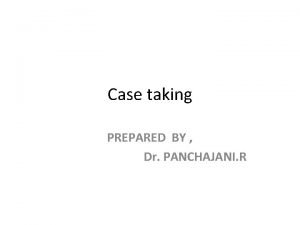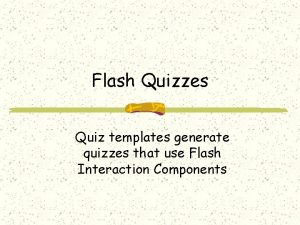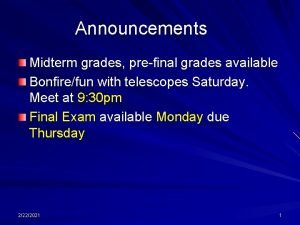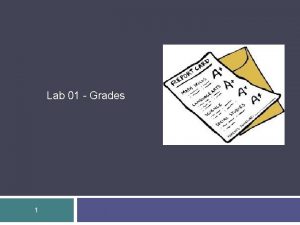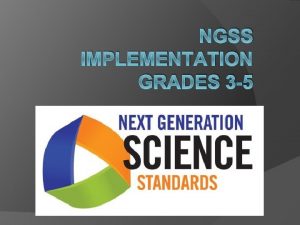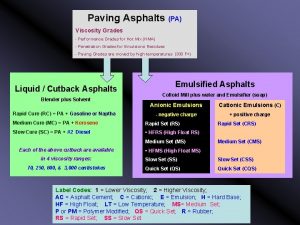Class grades n 3 Quizzes n n n



























































- Slides: 59

Class grades n 3 Quizzes n n n 9/27: Ventricular System 11/20: Brainstem and Basal Ganglia 12/6: Cranial Nerves n 2 Exams n n n Clinical Notebooks Due: 11/13 ----no late submissions accepted 11/1: Somatosensory System, Visual System, Central Auditory System, and Vestibular System 11/27: Motor System: Cortical Level, Cerebellum, Brainstem, Basal Ganglia and Spinal Cord

The Meninges and the Ventricular System

Learning Objectives n n n 1. Describe the meninges, their locations, and their functions. 2. Identify parts of the ventricular cavities. 3. Discuss functions of cerebrospinal fluid. 4. Describe the mechanism of cerebrospinal fluid production. 5. Describe the circulation of cerebrospinal fluid. 6. Explain the diagnostic significance of the cerebrospinal fluid.

Protection of the CNS n Function: n CNS is fairly soft and gelatinous in nature n Basic protection

Meninges of the Brain

Meninges of the Brain n Three Meninges:

The Meninges n Bhatnagar & Andy, 1995, Figure 2. 45 A

Meningeal Layers: Dura Mater n Location: n Function:

Meningeal Layers: Dura Mater n Structure: n Two spaces n Two fibrous layers of the dura

The Meninges n Bhatnagar & Andy, 1995, Figure 2. 45 A

The Meninges n Love & Webb, 1996, Figure 3 -3

Dural Extensions n Falx Cerebri n Location: n Cavity Formations:

Dural Extensions on Midsagittal Section n Bhatnagar & Andy, 1995, Figure 2. 43

Dural Extensions on Coronal View n Bhatnagar & Andy, 1995, Figure 2. 44 A

Dural Extensions n Tentorium Cerebelli n Location: n Tentorial Notch

Dural Extensions on Midsagittal Section n Bhatnagar & Andy, 1995, Figure 2. 43

Dural Extensions on Coronal View n Bhatnagar & Andy, 1995, Figure 2. 44 A

Dural Extensions n Falx Cerebelli n Location:

Dural Extensions on Midsagittal Section n Bhatnagar & Andy, 1995, Figure 2. 43

Dural Extensions on Coronal View n Bhatnagar & Andy, 1995, Figure 2. 44 A

Meningeal Layers: Arachnoid Membrane n Structure: n Location:

Meningeal Layers: Arachnoid Membrane n Spaces: n 1. Subarachnoid space n 2. Subdural space:

The Meninges n Bhatnagar & Andy, 1995, Figure 2. 45 A

Arachnoid Villi or Granulations n Bhatnagar & Andy, 1995, Figure 2. 41

Meningeal Layers: Pia Mater n Location: n Structure:

The Meninges and the Spinal Cord n Similar Structures

The Spinal Cord and Its Meninges n Bhatnagar & Andy, 1995, Figure 2. 46

The Ventricles

The Ventricular System n Three Parts: n Function:

Ventricular System in Relation to Brain: Lateral View n Bhatnagar & Andy, 1995, Figure 2. 37

Ventricular System: Lateral View n Bhatnagar & Andy, 1995, Figure 2. 35 A

Ventricular System: Dorsal View n Bhatnagar & Andy, 1995, Figure 2. 35 B

The Lateral Ventricles n Structure and Shape: n Location: n Connection: n Choroid Plexus:

Ventricular System in Relation to Brain: Lateral View n Bhatnagar & Andy, 1995, Figure 2. 37

The Third Ventricle n Location and Shape: n Connection: n Choroid Plexus:

Ventricular System in Relation to Brain: Lateral View n Bhatnagar & Andy, 1995, Figure 2. 37

The Fourth Ventricle n Location: n Shape: n Structure: n Function:

Ventricular System in Relation to Brain: Lateral View n Bhatnagar & Andy, 1995, Figure 2. 37

Subarachnoid Space n Location: n Arachnoid Trabeculae

The Meninges n Bhatnagar & Andy, 1995, Figure 2. 45 A

Ventricles n Inner Walls

Cerebrospinal Fluid n Structure: n Circulation n Function:

Choroid Plexus n Function: n Location:

Path of CSF Circulation n Pathway: n n n Flows from the lateral ventricles into the third ventricle n Via Monro’s foramen Then flows from the third ventricle to the fourth ventricle through the cerebral aqueduct Then flows from the fourth ventricle into the subarachnoid space through three apertures n Two lateral Foramina of Luschka n One mediodorsal Magendie’s foramen Then travels to reach the inferior surface of the cerebrum and moves superiorly over the lateral aspect of each hemisphere Some of it moves into the subarachnoid space around the spinal cord

The Ventricular System: Midsagittal View n Bhatnagar & Andy, 1995, Figure 18. 2

Circulation of the CSF n Love & Webb, Figure 3 -6 1996,

Clinical Considerations n Drainage of the CSF n Inadequate Drainage of the CSF

Clinical Considerations n n Rate of CSF Production Disassociation between Production and Absorption Rate of the CSF

Clinical Considerations n Hydrocephalus n Increased Pressure in the Brain n Sustained Pressure

MRI of Enlarged Lateral Ventricles Secondary to Hydrocephalus n Bhatnagar & Andy, 1995, Figure 18. 3

Medical Diagnostic Procedures n Measurement of the pressure of the fluid n If abnormally high, may suspect: n Intracranial tumor n Intracranial hemorrhage n Hydrocephalus n Meningitis n Encephalitis

Treatment n Hydrocephalus n No longer a fatal condition n If diagnosed early n n Can be surgically treated Treatment n Involves diverting the blocked ventricular CSF n n To another cavity for absorption Procedure n Tube is surgically inserted in the ventricular cavity n And use to divert CSF flow to the peritoneal cavity in the abdomen

Medical Diagnostic Procedures n Lumbar Puncture or Spinal Tap n Needle inserted into the lumbar subarachnoid space n Between the fourth and fifth lumbar vertebrae n n Because spinal penetration at this point does not cause any injury to nerve fibers Attach needle hub to a manometer or other pressure sensitive device n A pressure level higher than normal suggests that a pathologic process exists

Medical Diagnostic Procedures n Catheter Insertion into the Lateral Ventricles n Measure Ventricular pressure n Increased intracranial pressure occurs in response to: n n n 1. Increased amounts of CSF 2. Brain swelling 3. And brain tumors

Medical Diagnostic Procedures n Additional Procedures Associated with Spinal Puncture n Procedure also used to draw out CSF for chemical or cell studies n Diseases of the CNS change the constituent composition of the CSF n n An alteration serves as a diagnostic tool for identifying pathologic changes that occur in the brain and spinal cord n May suggest acute bacterial meningitis Route used to inject drugs to combat infection or to induce anesthesia n Anesthesia prevents nerve impulses from being conducted through the spinal nerves n From the lower body up to the level of the spinal injection

Define the Following Technical Terms: n n n n Arachnoid granulations Arachnoid trabecula Cerebrospinal fluid Choroid plexus Ependymal cells Intracranial pressure Lumbar Puncture n n n Meninges Meningitis Septum Subarachnoid space Subdural space Ventricles

Review Questions n n n n 1. Discuss the function of the meningeal membranes of the brain and spinal cord. 2. Describe the location of epidural, subdural, and arachnoid spaces. 3. Name the dural extensions of the brain and describe their relationship to the brain. 4. With a labeled diagram, identify major parts of the ventricular system. 5. Discuss the functions of the cerebrospinal fluid. 6. Discuss the production, circulation, and absorption of the cerebrospinal fluid. 7. Describe the mechanism, clinical implications, and treatment of hydrocephalus.

The Meninges and the Ventricular System Graphics

THINGS TO DO BEFORE LECTURE
 Quizzes
Quizzes The odyssey book 1 quiz
The odyssey book 1 quiz Parallel computing quiz
Parallel computing quiz Holes questions chapter 1-5
Holes questions chapter 1-5 Dirty mind test
Dirty mind test Quizzes
Quizzes Coriolis effect
Coriolis effect Weighfair
Weighfair Happy monday quiz
Happy monday quiz Fft quiz
Fft quiz Quizzes
Quizzes Https://www.tate.org.uk/kids/games-quizzes/street-art
Https://www.tate.org.uk/kids/games-quizzes/street-art Quizzes
Quizzes Quizzes
Quizzes Frankenstein quizzes by chapter
Frankenstein quizzes by chapter Charging by induction
Charging by induction Night chapter 4 quiz
Night chapter 4 quiz Sparc quiz answers
Sparc quiz answers Evaluating algebraic expressions quiz
Evaluating algebraic expressions quiz Introduction to java programming 10th edition quizzes
Introduction to java programming 10th edition quizzes 8 types of energy
8 types of energy Neprhon
Neprhon Jlab quizzes
Jlab quizzes Quizzes for students
Quizzes for students Quizzes
Quizzes How to change fraction to decimal
How to change fraction to decimal Vle itsligo
Vle itsligo Foods of jannah
Foods of jannah Bcos one
Bcos one Valsulva
Valsulva Ib grades to percentage
Ib grades to percentage Nnn grades
Nnn grades English school grades system
English school grades system Gerd symptoms
Gerd symptoms Cpcs job grade
Cpcs job grade Mercer pay grades
Mercer pay grades Bilateral grade 3 varicocele
Bilateral grade 3 varicocele Alis test
Alis test Grading of muscle power
Grading of muscle power Thrill murmur grade
Thrill murmur grade Zra salary grades
Zra salary grades Swap profile grades
Swap profile grades Egg function
Egg function Salary structure design
Salary structure design Plasenta previa lateralis
Plasenta previa lateralis The practice of statistics third edition
The practice of statistics third edition Gina guidelines for asthma
Gina guidelines for asthma Normosefali
Normosefali Epso grades
Epso grades Yield grade 1
Yield grade 1 Renweb rancho christian
Renweb rancho christian Egg grading canada
Egg grading canada Grades of joint mobilization
Grades of joint mobilization Metamorphic grade and facies
Metamorphic grade and facies Dyspnea grading
Dyspnea grading Ib grades to percentage
Ib grades to percentage Schooling system in italy
Schooling system in italy Placenta previa grades
Placenta previa grades Clubbing grades
Clubbing grades Ggs engineering services
Ggs engineering services


